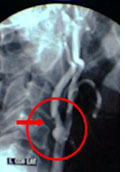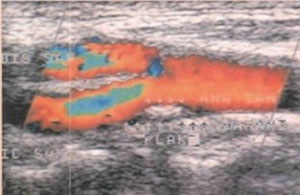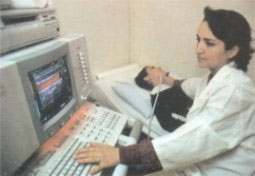Carotid Artery and Stroke
Stroke takes the third place among the cause of death in the west countries and the second place after the heart infraction among the causes of death due to cardiovascular diseases.

In addition to death, disability caused by the stroke is another dimension of the event negatively affecting the patient and the society.
Stroke
In a study by Mayo Clinic, stroke likely to develop annually has been found as 276.8 per 100.000 for the human population between 55 - 64 years old and 632 per 100.000 for the human population between 65 - 74 years old. As it is seen, the possibility for stroke increases by the age.
Stroke occurs as a result of a blockage in the arteries supplying the brain tissue followed by the arrest of circulation and unable to supply the brain tissue in that region.
The brain tissue that is high sensitive to the lack of oxygen, loss its functions in a short term and loss of function occurs in the related organs (hand, arm, leg, speech and swallowing center, etc.).
Main cause of the stroke is atherosclerosis. By the storage of some fat molecules in the blood, particularly cholesterol in the vein walls, atheroma plaques following the calcium deposit cause to narrowing of the vein's inner diameter. Atheroma plaques become an ulcer by the time and small clots may be accumulate on them.
Occasionally, these clots are released, blocking the thin vessels in the brain and sometimes the carotid artery and cause to stroke.
The clot blocking the vessels may occur locally in the veins as well may be resulting from the cardiac chambers as a result of a heart disease.
Predictors and signs
Stroke may develop suddenly without any early warning signs.
- Important clinical symptoms should be considered by the patient and physician are as follows:
- Temporary power loss, numbness and tingling in a half of the body (such as hand, arm, face and tongue).
- Temporary loss of vision, blackout and lightning in the eyes
- Dizziness, loss of balance
Color Doppler Ultrasonography

Image obtained by Colored Doppler Ultrasonography
Definitely provide your carotid arteries checked by "Colored Doppler Ultrasonography" before your planned open heart surgery.
Coronary artery disease and stroke
Risk factors causing to coronary artery disease and increase of the risk for stroke are almost the same. Risk factors suc as high levels of blood cholesterol, smoking, hypertension and diabetes play rol for developing of both diseases.
Incidence of carotid artery disease in the people with coronary heart disease is quite high (8-12 %). Therefore it is vital to examine the carotid arteries with colored doppler ultrasonography at the patients over 40 years old requiring coronary bypass surgery.
Carotid artery is operated both before the heart surgery (in special conditions) and together with the heart surgery at the patients with a narrowing over the 70-80% detected.
In this operation, rigid plaques constricting the carotis artery are cleaned, and the carotid artery is extended with a patch if is needed. These operations are successfully performed in our country for a long time.
Conclusion

It is crucial to check once a 6 months after the operation the patients with a narrowing of more than 50% detected in the carotid artery and once a year the patients with a narrowing less than 50% detected with "doppler ultrasonography" to avoid a future risk of stroke.




